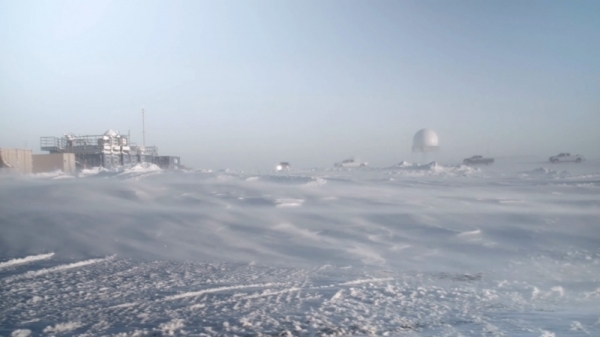A telecommunications fiber optic cable deployed offshore of Oliktok Point, Alaska recorded ambient seismic noise that can be used to finely track the formation and retreat of sea ice in the area, researchers report in The Seismic Record.
A telecommunications fiber optic cable deployed offshore of Oliktok Point, Alaska recorded ambient seismic noise that can be used to finely track the formation and retreat of sea ice in the area, researchers report in The Seismic Record.
Andres Felipe Peña Castro of the University of New Mexico and colleagues used distributed acoustic sensing, or DAS, to identify seismic signals related to the motion of waves on open water and the sea ice that suppresses that wave action. The technique offers a way to track sea ice with increasing spatial and temporal resolution—on the scale of hours and kilometers–compared to satellite images that are updated daily and may cover tens to hundreds of kilometers.
Swiftly monitoring sea ice changes is important to commercial shipping as well as Native communities and could become another useful tool in tracking Arctic climate change, the research team noted.
In the TSR study, the scientists were able to observe abrupt changes in sea ice extent up to 10 kilometers that occurred in less than a day.
Read more at Seismological Society of America
Image: Oliktok Point research facility in Alaska, where the DAS experiment was headquartered. (Credit: Sandia National Laboratories via Seismological Society of America)






